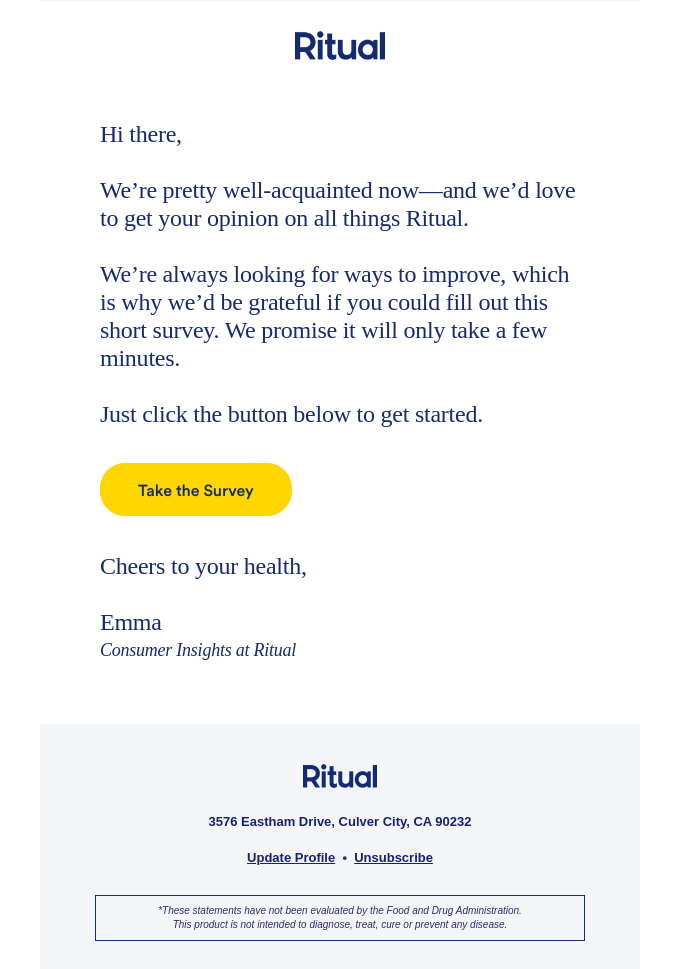Marketing
How can you measure and improve customer satisfaction?
Nowadays, it’s essential to put customer satisfaction at the heart of your strategy. Discover how to measure it and how to improve it.

PUBLISHED ON
How many times have you come across a comment online complaining about a product or company? As consumers, these reviews can be very helpful, but for marketers these comments are often our biggest nightmare.
Customer satisfaction has not always been the top priority for companies, but the digital environment has changed the rules of the game. Now, a dissatisfied customer can immediately leave a negative comment on social media or a review site and have a direct impact on a company’s image.
That’s why it’s essential to put customer satisfaction at the heart of your strategy. In this article, we’ll explain what customer satisfaction is and how to measure it so that you can improve it.
Table of content
NPS or Net Promoter Score
CSAT or Customer Satisfaction Score
CES or Customer Effort Score
Make life easier for customers
Listen to your customers
Ask customers for their opinion
What is customer satisfaction?
Customer satisfaction is an indicator used to assess the extent to which consumers are satisfied with a brand. It can refer to the products or services of a given company, as well as to the experience it provides to the customer.
Customer satisfaction depends on many factors, like meeting delivery deadlines, product or service quality, customer service responsiveness, etc. You know the golden rule in these cases: the customer is king and your priority should be to make them happy. It’s like trying to make a good first impression on a date… you don’t want to drive them away.
Why should you have a customer satisfaction strategy?
Why is customer satisfaction so important?
First, because it is crucial to retain and build customer loyalty. You’ve surely heard it before: Loyalty campaigns are more cost-effective than recruitment campaigns. So, don’t let those hard-earned customers go to your competitors.
If you don’t focus on customer satisfaction, you risk losing a customer. When that happens, you also risk them spreading a negative opinion of your company. And we already know how dangerous that is: It can affect your brand image and your ability to attract new customers. That’s a death sentence for any business.
Don’t underestimate the importance of word-of-mouth:A dissatisfied customer often makes more noise than a satisfied one (again, kind of like a date). Keep this in mind: 74% of consumers get information on Google before buying a product or service, and 64% of them check reviews and ratings before making a purchase.
What are the standard customer satisfaction indicators?
There are several KPIs that measure customer satisfaction. Let’s check out the main key indicators you need to be aware of to evaluate the satisfaction of your customers.
NPS or Net Promoter Score
The NPS, or Net Promoter Score, is used to evaluate customer satisfaction in the form of a recommendation rating. The customer rates, on a scale of 0 to 10, the extent to which they would recommend the brand’s services or products to another person. The question asked is: “How likely would you be to recommend brand X to a friend or colleague?”

Image source: SurveyMonkey
After collecting customer data and applying the NPS calculation method, an index is obtained corresponding to the percentage of customers who would recommend the company in question.
According to the rating given by the customer, they are classified into one of the following three categories:
Promoter: Rating of 9 or 10
Passive: Rating of 7 or 8
Detractor: Rating from 0 to 6
The final score is the Net Promoter Score (NPS), which is obtained by subtracting the detractors’ rating from the promoters’ rating. In other words:
Net Promoter Score = Promoters - Detractors. Obviously, you want as many promoters as possible.
CSAT or Customer Satisfaction Score
The CSAT, or Customer Satisfaction Score, is used to calculate consumer satisfaction in the form of a satisfaction score. This indicator is generally used to collect customers’ impressions immediately after a purchase. The CSAT score is calculated by asking the question “Are you satisfied overall with Y?” with response options “Very satisfied / satisfied / dissatisfied / very dissatisfied.”
The score is obtained by customers who say they are very satisfied or satisfied with their purchase or experience. For example, if 40% of respondents are very satisfied and another 40% satisfied, the CSAT score is 80%.

Image source: Userlike
CES or Customer Effort Score
The CES, or Customer Effort Score, is used to evaluate the quality of a customer experience or service based on the level of effort made by the consumer to achieve their objective.
The CES can be used, for example, in the context of completing an action (like a purchase, contract modification, obtaining a quotation, etc.) or contacting customer service. The CES is calculated by asking the question: “On the following scale, how would you rate the effort you have made to…?”

Image source: Cislatam
Obviously, the better the rating obtained, the less effort required from your customers… and that’s good! The secret to great client satisfaction is to make life as easy as possible for your customers.
Strategies to improve customer satisfaction
The best way to have good customer satisfaction indicators is to focus on improving customer experience. So, how can you do that?
Make life easier for customers
We’ve already mentioned it, but it really is the key to good customer satisfaction.
Make it easy for your customers so they have a positive experience while exerting as little effort as possible. Whether it’s finding what they need on your website, making a purchase, or accessing your support service, they shouldn’t run into any obstacles that complicate things for them.
To do this, make sure to optimize the UX design of your website. Ergonomics, ease of use, accessibility, design… Pay attention to everything. Also make sure you implement processes to get notified if there is a technical problem that might lead to dissatisfied customers.
Here’s a pro tip from us: You can also help customers by proactively sending out emails with valuable content, which allows them to get the most out of your product or service. You can start with a series of welcome emails to guide your customer through their first steps, automate messages for those who get stuck on your platform, or send newsletters with ideas to make their experience easier and more rewarding.
Listen to your customers
Again, treat your customers like you treat your date: Don’t dominate the conversation, and listen to them. If you pay attention to your customers’ opinions and expectations, you will get valuable information that will help you improve their satisfaction and your relationship with them. It’s like getting a second date… or a second conversion.
To do this, Internet users must be able to easily contact you through various means, such as your website or social networks. When it comes to email, we recommend that you do not use a no-reply address. No-reply addresses send the wrong message (“We don’t want to hear from you!”) and will only make your frustrated customers angrier. Remember, a frustrated customer will never be a satisfied customer.
You can also allow them to leave reviews on platforms like Trustpilot. By giving them the opportunity to provide feedback about your company, you show your customers that you care about what they think and tell your potential customers that you have nothing to hide.
Ask customers for their opinion
A date listens to you, but a good date asks questions and is interested. Do the same with your customers. Don’t just listen passively – take the lead by asking your customers for their opinion and don’t be afraid to address their dissatisfaction. Use satisfaction at each stage of your customers’ journey to ask them how they’ve found things so far.
You might think we’re biased (disclaimer: we’re not), but email is really a great way to do this. You can automatically send customers a message after a purchase to ask them what they think of the product they just received. You can also reach out to customers who have just contacted your support team so they can evaluate their service. It’s a great way to show them that you care about their opinion and experience.

Source: Really Good Emails
By collecting feedback from your users, you’ll be able to identify your strengths and weaknesses so you can improve your products and services accordingly.
Improve customer satisfaction with Mailjet
The satisfaction rate of your customers should be your top priority. Using these methods to maintain satisfied customers will allow you to increase their loyalty and your sales. To do so, implement a customer-centric culture in your company to pamper your consumers throughout their customer journey.
To stay in touch with your customers and ask for their opinion, there is nothing more effective than email. Email is the perfect tool to connect with customers. You can easily use it to introduce your brand via a welcome campaign, keep them up-to-date on changes and news with newsletters, or to ask them to complete a feedback survey.
Mailjet intuitive platform allows you to easily design, send, and follow up on your email campaigns. You can create welcome emails, use advanced features such as segmentation to send messages only to certain segments, or build personalized campaigns to send tailored messages to each recipient. Start building your customer satisfaction now, and you’ll have more “dates” than you know what to do with.
Boost your customer satisfaction strategy with emailEasily create and send welcome emails, newsletters, surveys and other email marketing campaigns with Mailjet. Edit your templates and deliver emails directly to customers’ inboxes.








